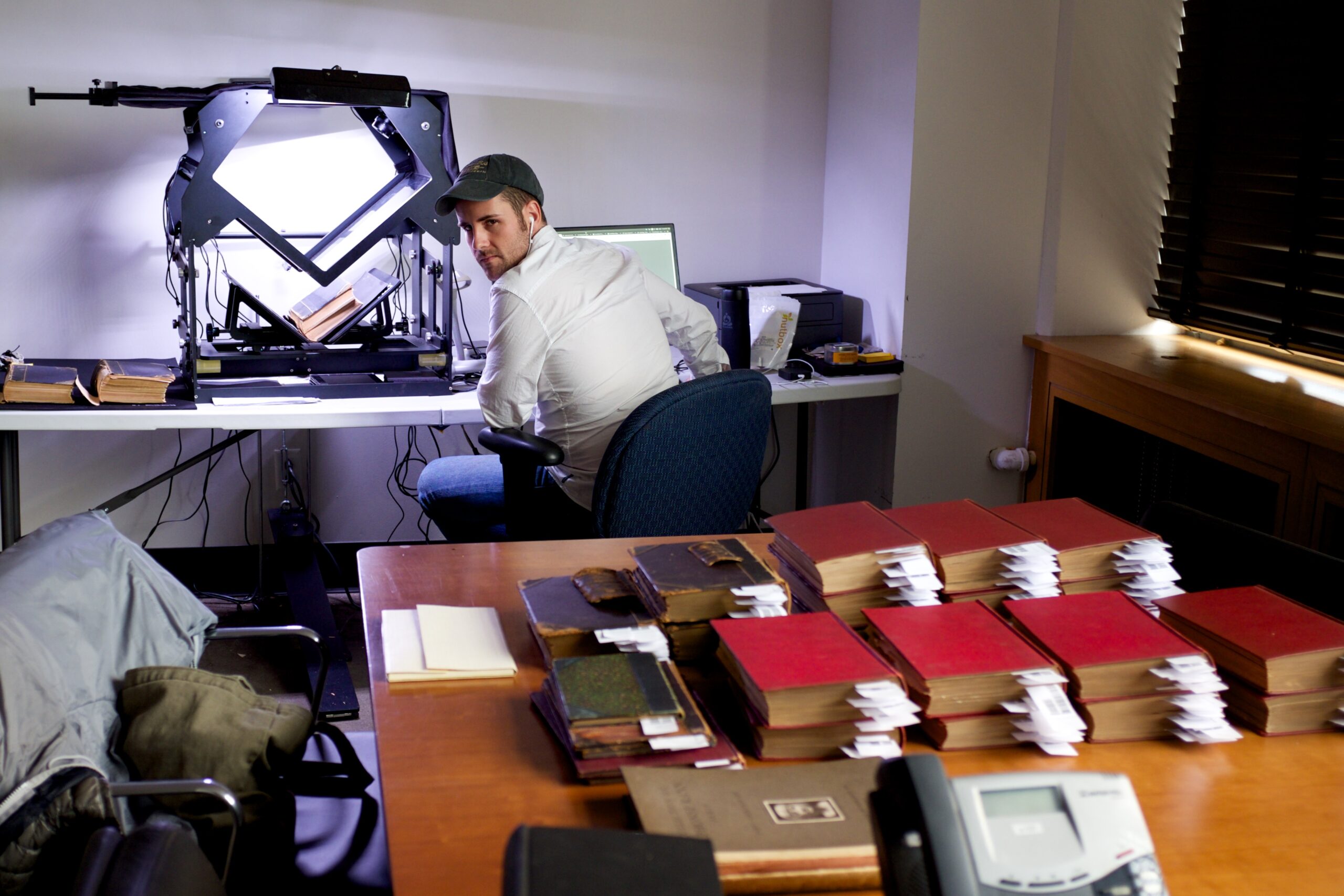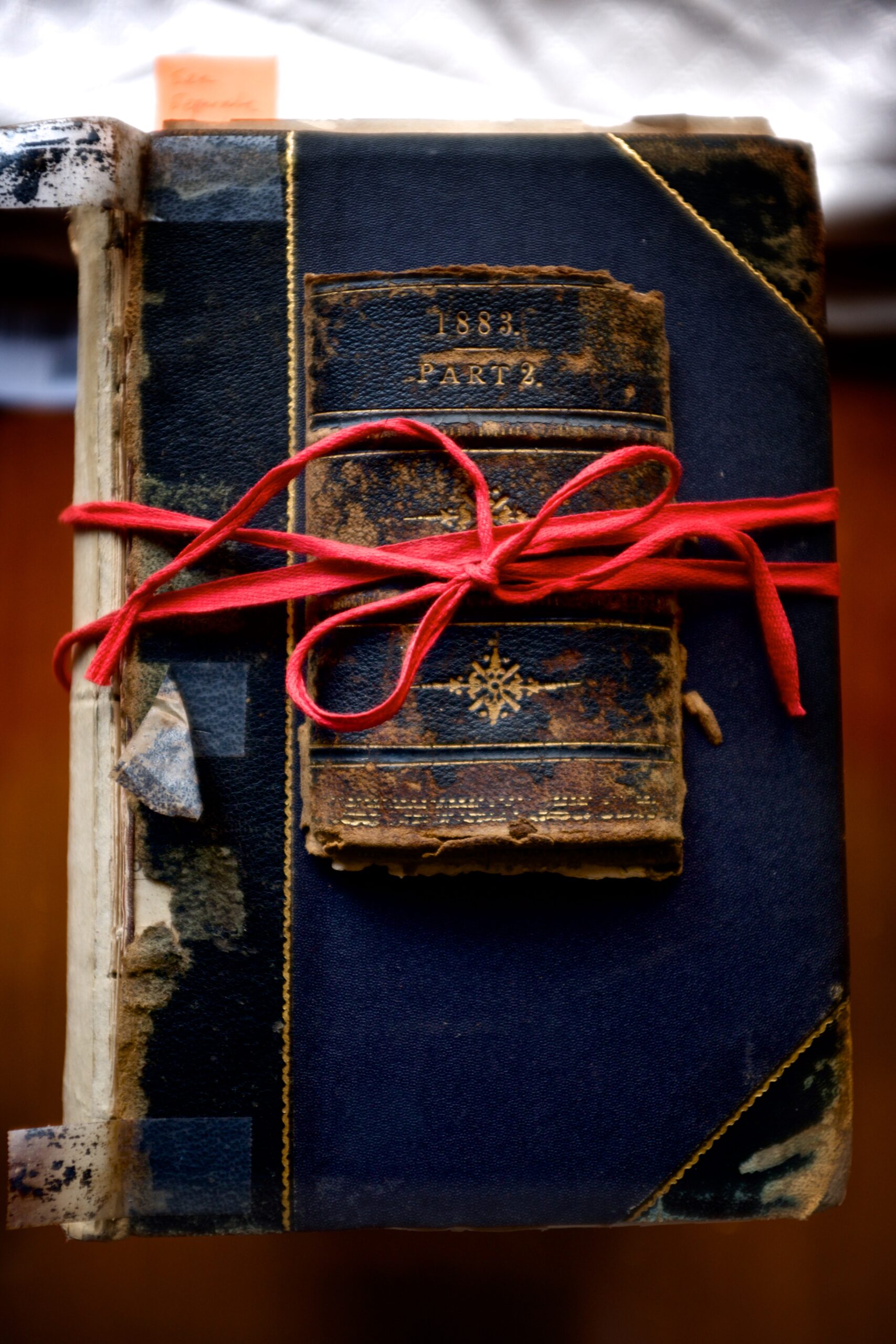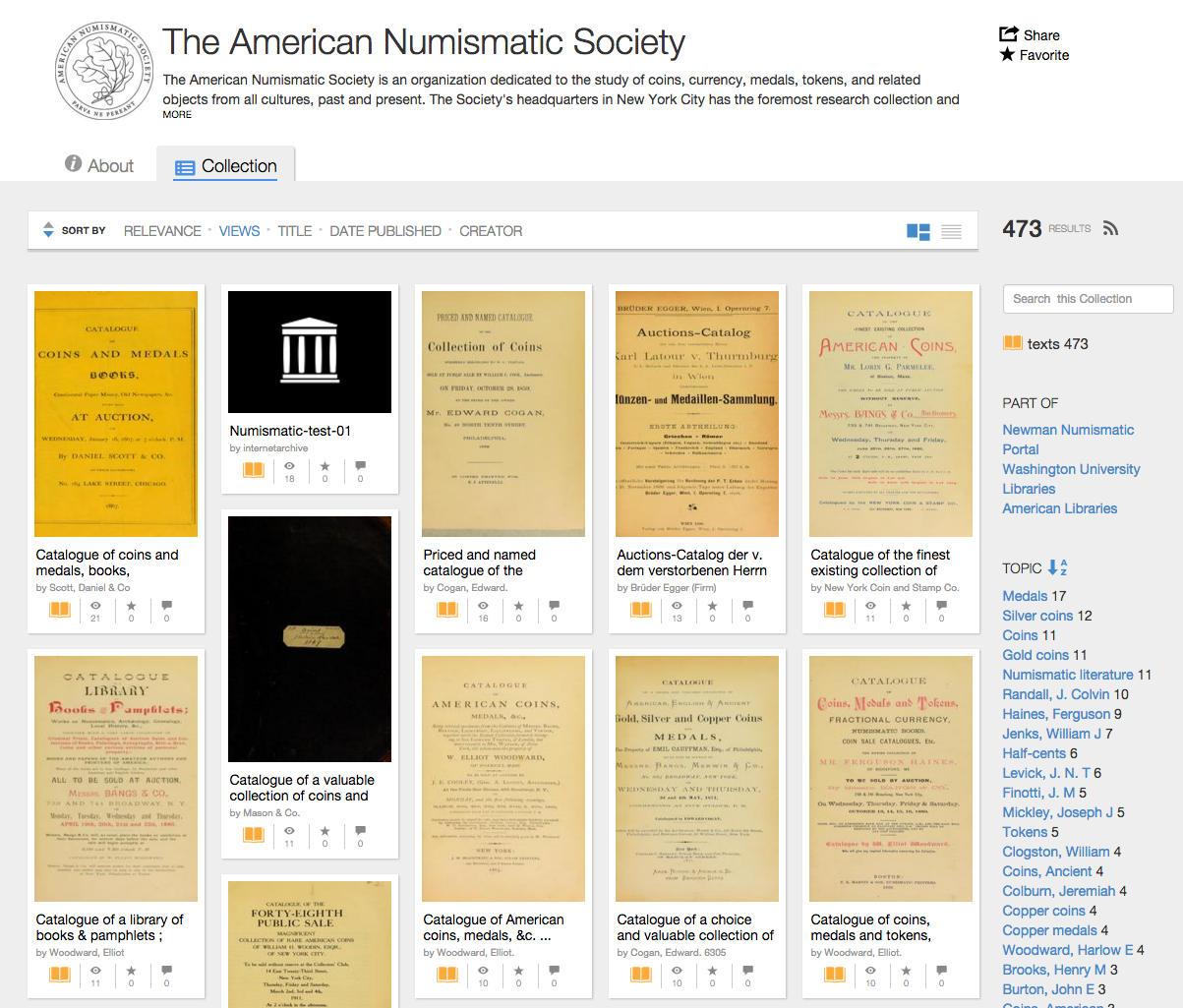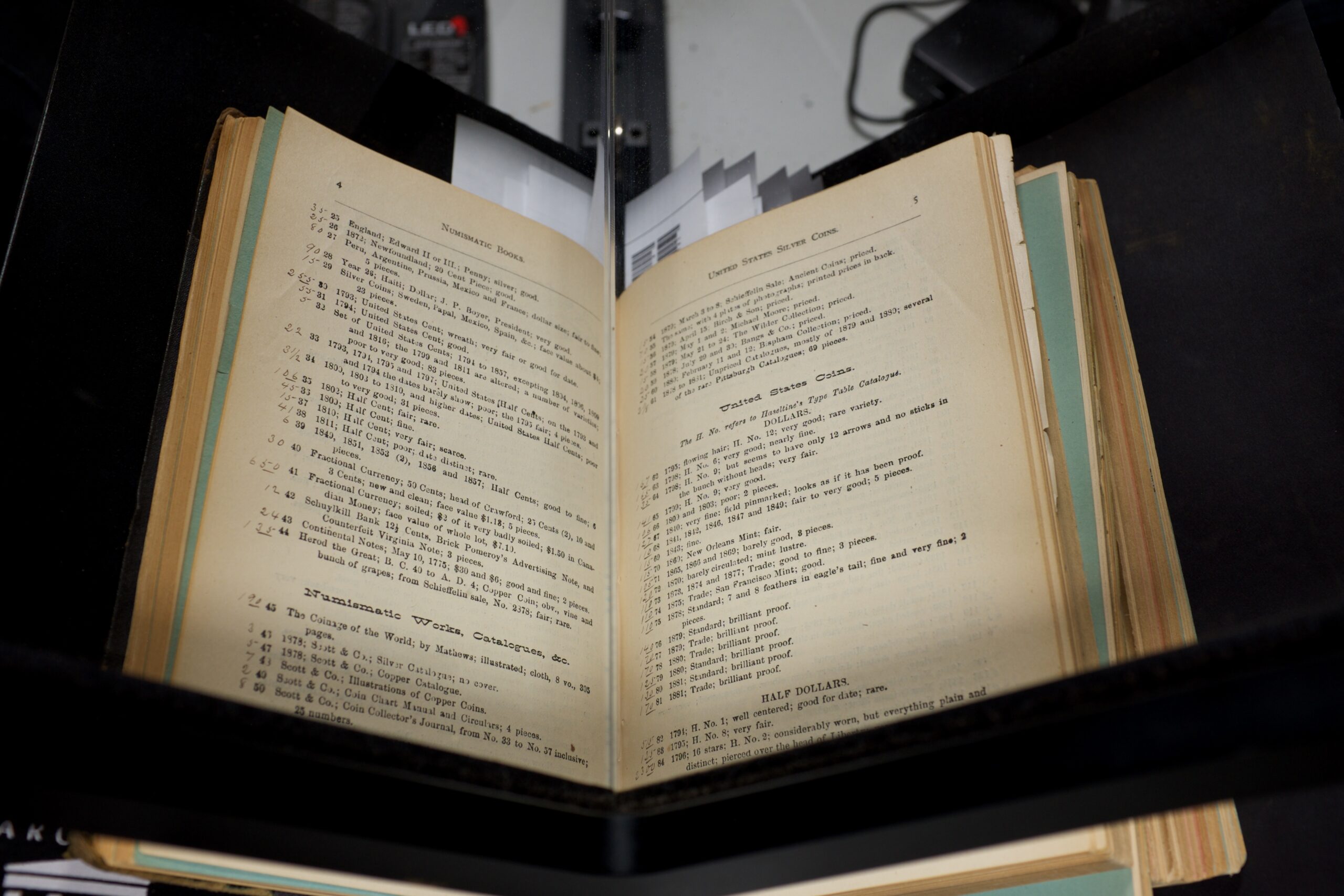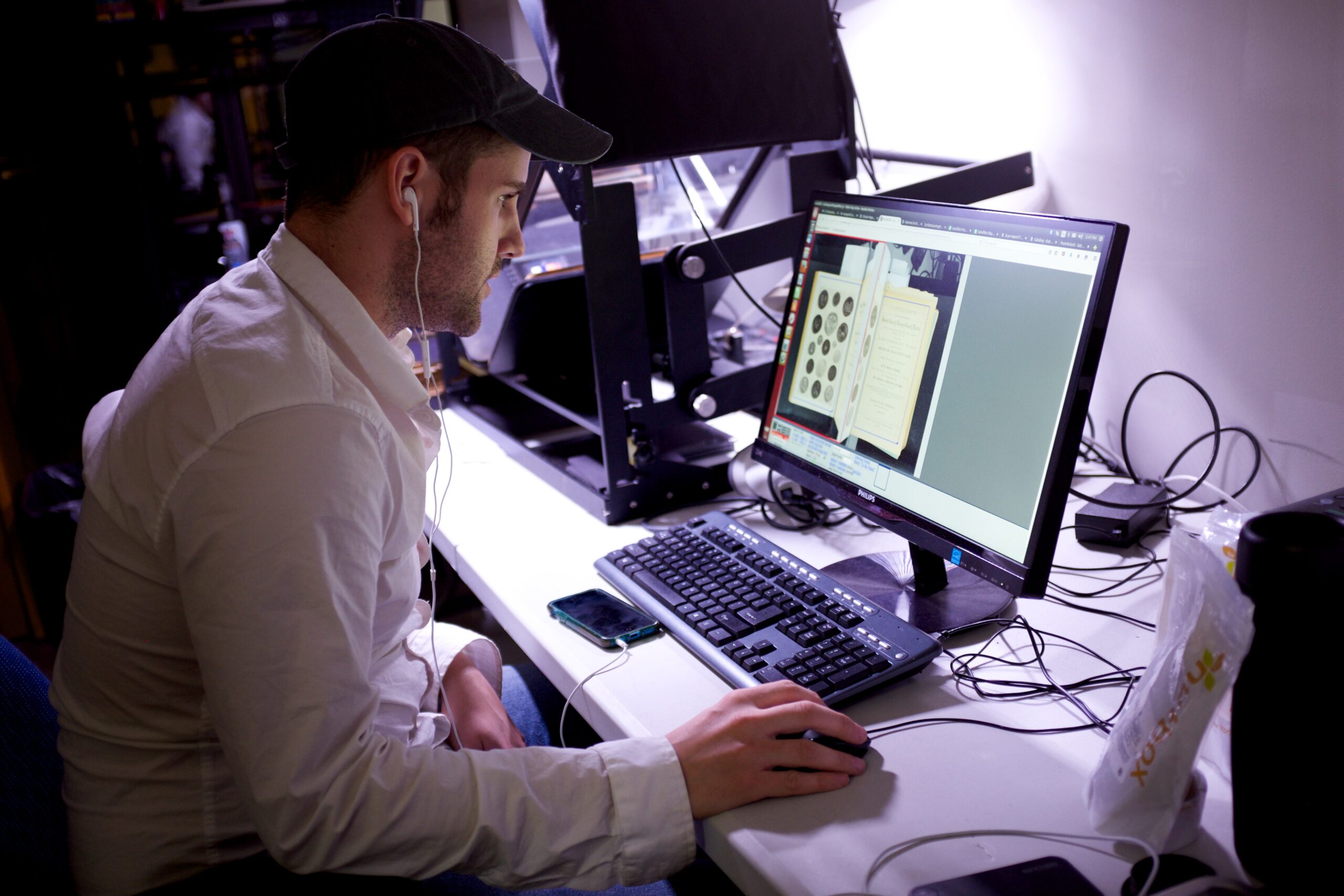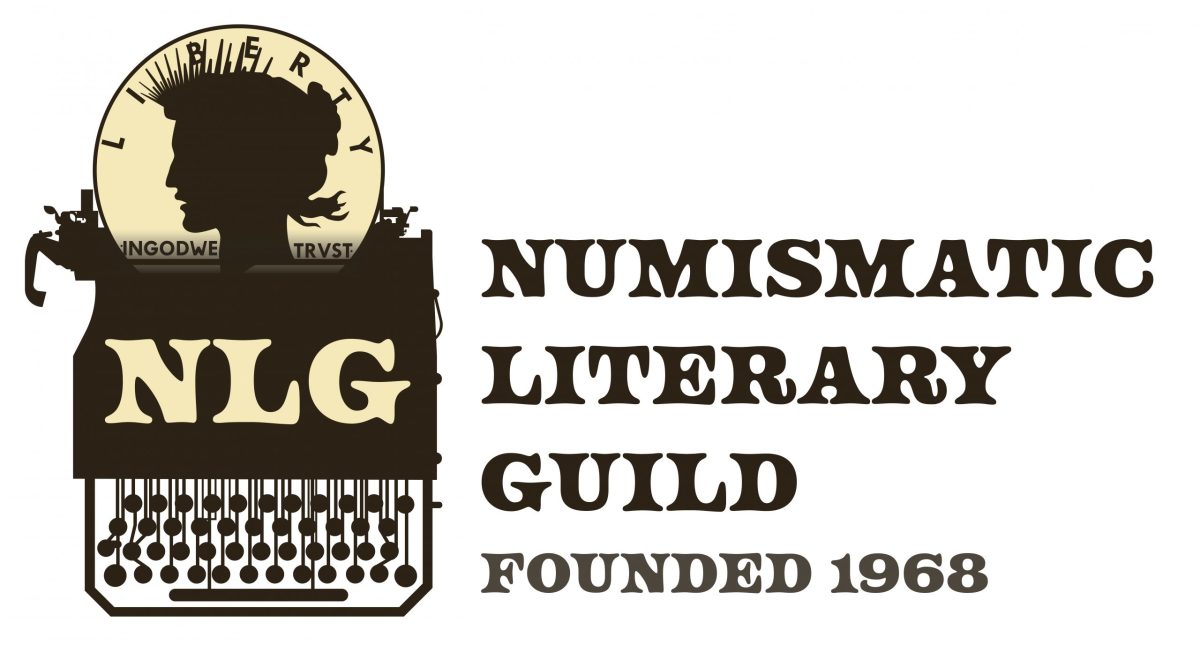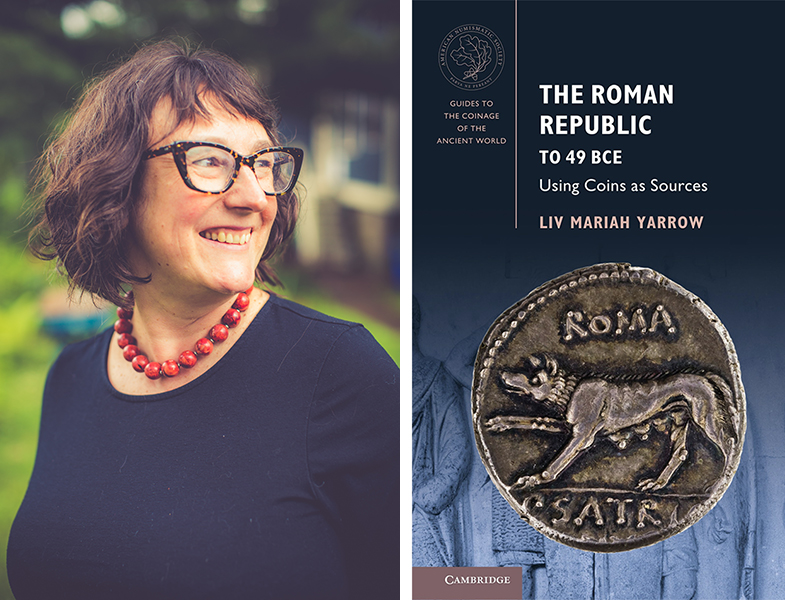ANS Scanning Project Passes 30,000 Pages
In December 2015, the American Numismatic Society began a joint project with the Newman Numismatic Portal, an online numismatic resource, in order to enable greater access to American numismatic research material on both the ANS Digital Library and Newman Portal websites.
To date, nearly 500 early American auction catalogues have been scanned by the ANS for this project totaling over 30,000 pages so far. These catalogues include those of Frossard, Woodward, Chapman, Elder, and other notable names in the field.
John Graffeo, the scanner operator, trained first with ANS librarian/archivist David Hill throughout 2015 in the care and handling of the Society’s rare books, and later trained in Princeton with the Internet Archive on how to use the revolutionary Table Top Scribe scanner. The scanning process includes matching an auction catalogue with its metadata (information about the book) in the ANS’s library catalogue, taking a test image, and then proceeding to scan the rest of the volume.
The scanner itself is comprised of a metal carriage that cradles each book so as not to effect the spine. Graffeo uses a foot-pedal to raise the book to a pair of glass panes after which he clicks a button to activate two cameras, which photograph the book’s spread.
After the catalogue has been photographed, Graffeo checks for image quality, tags each page (front matter, interior pages, back matter, cover), and then crops each image, being sure to maintain all of the data on the page including handwritten marginalia such as sale prices and buyer names. Once the volume is complete, Graffeo uploads it to the Internet Archive for a spot-check on quality, after which it goes live online at the Newman Numismatic Portal as part of the ANS’s collection of online auction catalogues. Some of the auction catalogues are exceedingly fragile, so scanning them in this fashion helps to preserve their contents without destroying or damaging the books.
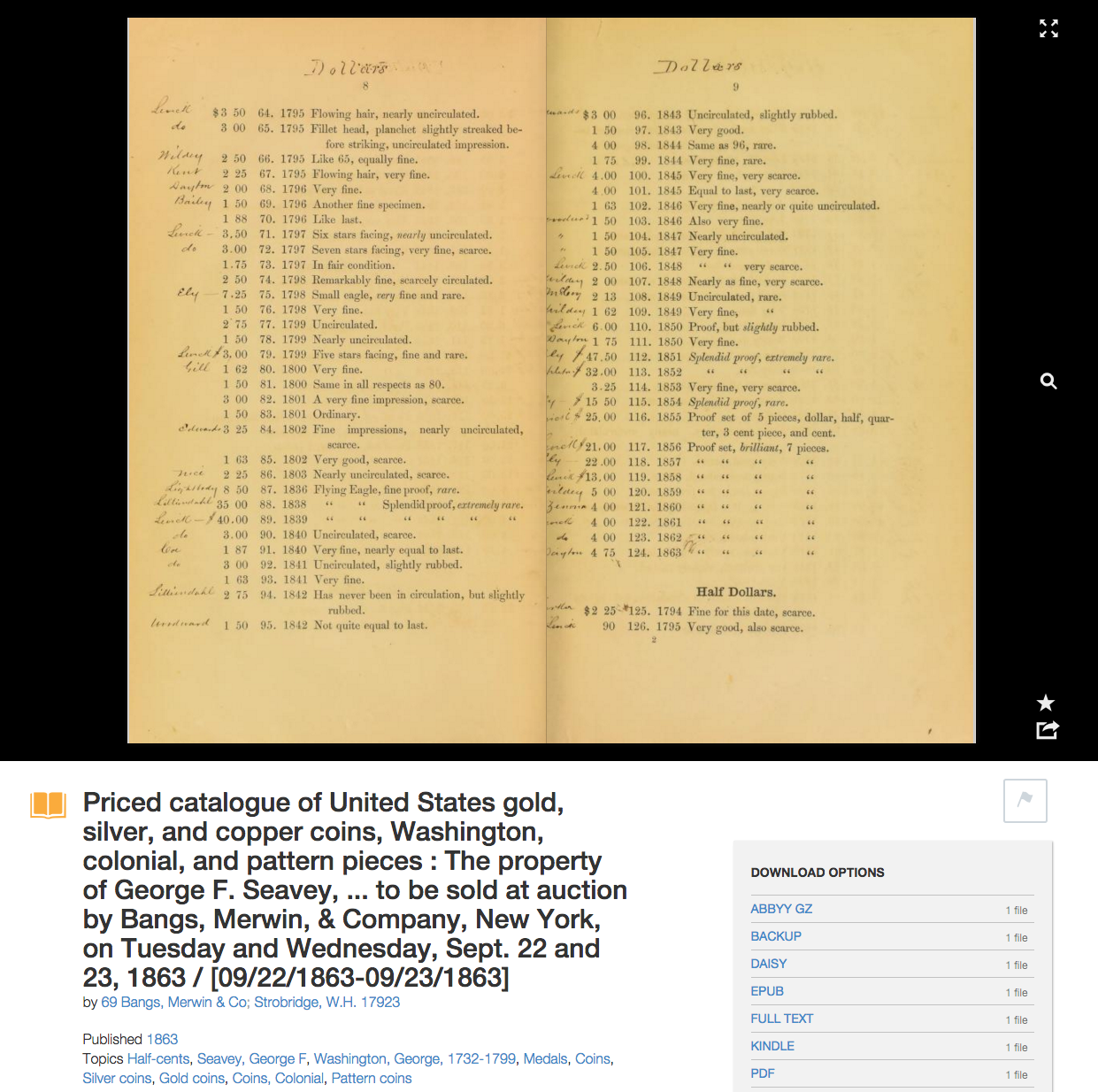
“This is a great project,” Graffeo said between scans. “It’s extending the wealth of numismatic information and sharing it for the public good.” All of the scans are available immediately as Open Access for free use by anyone for any reason. The content is shared, and the artifact of the book is preserved. Numismatics has been an interdisciplinary subject since its inception, and making all of the ANS’s holdings publicly available remains central to the Society’s mission.
The Newman Numismatic Portal, sponsored by a $2 million grant from the Eric P. Newman Numismatic Education Society to the Washington University Libraries, began operations in December 2014. It has digitized over 1,000 documents to date, including a unique set of bid books from the firms of Samuel and Henry Chapman, which were generously loaned by ANS Trustee Dan Hamelberg.
Administered through Washington University Libraries in St. Louis, the Newman Portal contracted with Internet Archive, which has provided equipment, training, and staff for the scanning operation at the ANS Library. Internet Archive is a non-profit organization dedicated to digital preservation of all media.
“We are thrilled to have this opportunity to begin distributing some of the Library’s research collections on a large scale in the same way that much of the Society’s coin collections are being made available through online research tools like PELLA, OCRE, and MANTIS,” David Hill, supervisor of the onsite operations, said. “When you think about all of the materials in the Library’s Rare Book Room, which include unique archival collections such as dealer and collector correspondence, you really begin to realize what an impact a project like this can have.”
(all photos by Alan Roche, American Numismatic Society)


